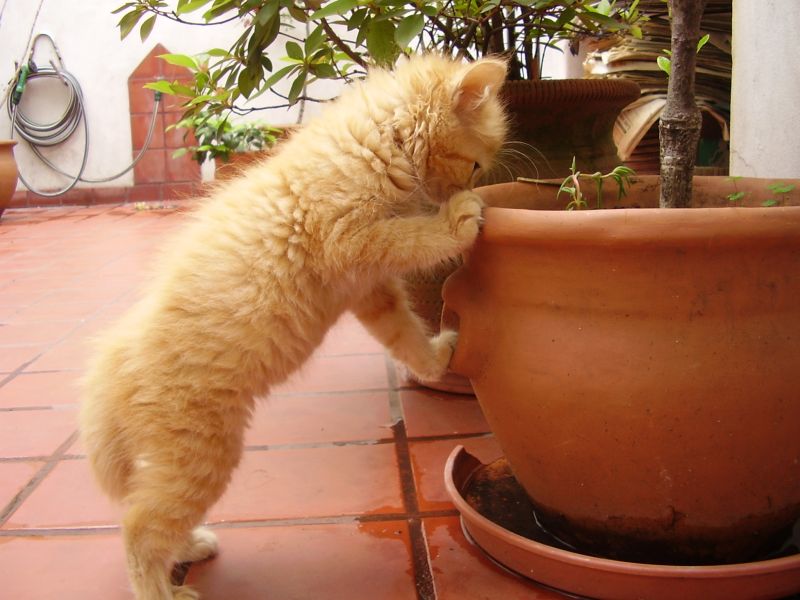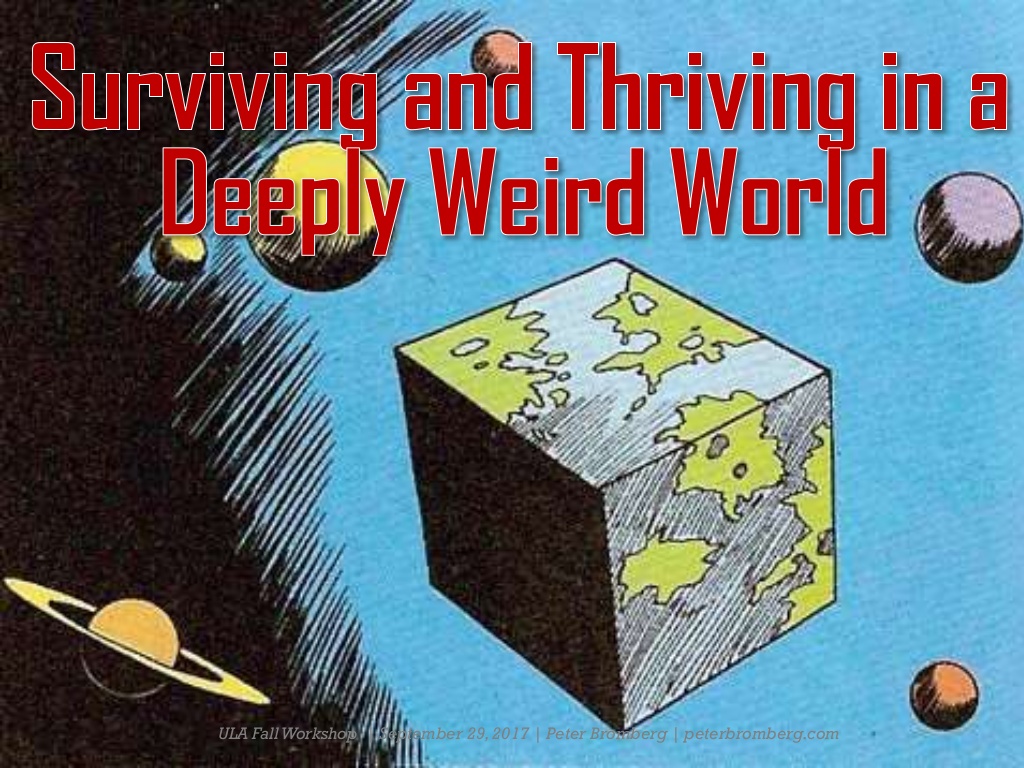Here are the slides to my recent keynote, “Surviving and Thriving in Deeply Weird World”, presented at the ULA Fall Workshop on September 29, 2017 at the Park City Library.
Organizational Culture
Cultures of Curiosity
ALALearning Blog Posts, Curiosity, Learnrt, Organizational CultureNEW ALALEARNING BLOG POST
This month ALALearning bloggers are focusing on how learning is done in our organizations. Having started at the MPOW just a few short months ago I am still learning how learning happens– formally and informally — in the organization. So rather than address the question narrowly, I’d like to look more broadly at the topic and suggest that the foundation for learning in any organization is having a culture of curiosity.
See the whole article over at ALALearning, (also transcribed below 3/27/13)
This month ALALearning bloggers are focusing on how learning is done in our organizations. Having started at the MPOW just a few short months ago I am still learning how learning happens– formally and informally — in the organization.
So rather than address the question narrowly, I’d like to look more broadly at the topic and suggest that the foundation for learning in any organization is having a culture of curiosity. Whether you are promoting learning in your organization through self-paced online tutorials, face-to-face workshops and discussions, or sharing of annotated bookmarks, learning will not happen in any real or consistent way unless there is a strong shared value of curiosity.
 Why do I assert this? Because an attitude of curiosity is the only known antidote to the single biggest block to learning: the idea that we already have the answer (and it’s 1st cousin, “I don’t care about the answer”.) Being in a state of curiosity means looking out at the world, collecting data, observing human behaviors and interactions, and asking “why?” and “what if?” These questions are humbling. They bring down our blocks and mitigate our filters and invite new data to enter our minds, and creatively find new ways to integrate and organize organizing data with a goal of understanding.
Why do I assert this? Because an attitude of curiosity is the only known antidote to the single biggest block to learning: the idea that we already have the answer (and it’s 1st cousin, “I don’t care about the answer”.) Being in a state of curiosity means looking out at the world, collecting data, observing human behaviors and interactions, and asking “why?” and “what if?” These questions are humbling. They bring down our blocks and mitigate our filters and invite new data to enter our minds, and creatively find new ways to integrate and organize organizing data with a goal of understanding.
THE VALUE OF A CULTURE OF CURIOSITY
One of the most powerful effects of cultivating a consciousness and culture of curiosity is that it greatly enhances communication and the quality of relationships. Communication (and thus learning) is shut down when we assume we understand the motivations of others, and all too often we ascribe negative motivations to others without pausing to contemplate their perspective.
Curiosity creates space for that pause. When we are in a place of deep and authentic curiosity about others, it is impossible to simultaneously be in a place of judgment, which is a closing of ourselves to other ways of seeing. When we curiously ask why, we open to the idea that others have a unique and valuable perspective that can expand our own data set and worldview. Asking why leads to conversation and exploration, which in turn leads us to a deeper understanding of how others experience the world, their motivations, and their choices. And this deeper understanding, in turn, helps to reinforce our own consciousness of curiosity, and thus our own personal culture of learning.
I am curious about what has worked for you. How is learning promoted in your organization? What tools, methods, tips, tricks have worked for you? Drop your thoughts in the comment section!
Research confirms: Goofing off at work makes you a better employee
Creativity, Emotional Intelligence, Organizational Culture, Productivity, Self-CareA new study by a bunch of Australians with too much time on their hands confirms what Library Garden has previously reported: Not working makes you a better worker.
 That’s right folks! Employees who surf the net, check Facebook, send some tweets, or regularly check on the latest Brangelina update (are they pregnant? are they adopting again? does Jennifer Aniston always have to be mentioned in these articles?) are actually MORE PRODUCTIVE. Don’t believe me? Here’s what Wired reported:
That’s right folks! Employees who surf the net, check Facebook, send some tweets, or regularly check on the latest Brangelina update (are they pregnant? are they adopting again? does Jennifer Aniston always have to be mentioned in these articles?) are actually MORE PRODUCTIVE. Don’t believe me? Here’s what Wired reported:
The University of Melbourne study showed that people who use the Internet for personal reasons at work are about 9 percent more productive that those who do not.
Isn’t that great? But wait, it gets better. There’s even a new pseudoscientfic euphamistic acronym:
Study author Brent Coker, from the department of management and marketing, said “workplace Internet leisure browsing,” or WILB, helped to sharpened (sic) workers’ concentration.
So the next time you’re caught watching the sneezing baby panda video you can confidently look your supervisor in the eye and say, “Goofing off? Why no boss, I was WILBing. Scientific research has proven that a good Wilb makes me 9% more productive.”
If your boss still has a problem with your wilbful behavior, you can claim, “I just have a bursty style, not a busy style, which means that although it might appear to the untrained eye that I’m never actually working, you’ll notice that all my work actually gets done.”
If this line is delivered correctly, it will create a moment of confusion as your boss ponders the busy/bursty conundrum, giving you a small window of opportunity to slip away for a donut break.
Happy WILBing!
I Hire People For Two Reasons
Management, Organizational Culture“I hire people for two reasons — and this is true– I hire people if they’re enthusiastic and if they’re nice. And to me nothing else matters… If they have those two things, we can teach ’em.”
–Bobby Flay, at Learning2007 Conference.
From: http://www.learning2008.com/Learning-2008-content/voices.htm
More Goodies:
Nordstrom Quality Customer Service
Customer Experience, Customer Service, Organizational CultureGood for the “New Seasons” Grocery store, which is taking a page out of the Nordstrom Employee manual, “Use your good judgment in all situations.” The New York Times Reported:
[New Seasons] employees are given “get out of jail free” cards with the instructions to do anything a customer wants. Mr. Rohter said one young clerk opened 81 jars of mustard for a customer to taste. Then he went to his supervisor, handed the card to him and explained what happened.
Printed on the back of the card:
Dear Supervisor: The holder of this card was, in their best judgment, doing whatever was necessary to make a happy customer. If you think they may have gone overboard, please take the following steps:
- Thank them for giving great customer service.
- Listen to the story about the events.
- Offer feedback on how they might do it differently next time.
- Thank them for giving great customer service.”
“We never reprimand someone for helping a customer”, Mr. Rohter said
From NYTIMES, January 4, 2006: In Oregon, Thinking Local


